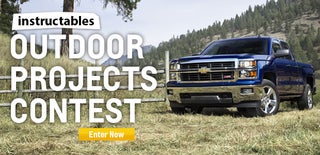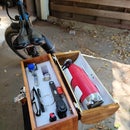Introduction: Finding Offbeat Local Hiking Destinations
I was inspired by an urban exploring website to come up with some cool destinations for my friends and family to explore. Please be safe when going off track. Tell someone where you are going and when you will return. The following are 2 examples of browsing a topographic map for clues to structures and other places that may not be commonly known by anyone in your community. For California we have a wonderful online newspaper collection http://cdnc.ucr.edu/cgi-bin/cdnc with newspapers going back to 1846 this is a great tool. Other states may have similar online collections. Old maps from your local historical society are another wealth of information.
The first destination site I found is one I actually discovered as a teenager wandering through the hills. I rediscovered it on a topographic map on trails.com Google Maps will also have these. These maps are great for finding structures and roads no longer in use. I'm exploring in an area that is mostly hills, so Google earth (satellite) is not as effective for scouting these sites as it would be for flatter areas. These 2 sites are not far from a major highway so we used visual navigation.
I have scoped out a few more destinations / abandonment's nearby; a lime kiln built in the mid 1800's and a couple of copper mines. We'll get to those someday.
Step 1: First Destinantion the Shanghai Water Tunnel
First place we explored was the water tank area on the map, we found the tank and found the Shanghai water tunnel from the late 1800's. A little (lot of) googling turned up this description:
"The tunnel is situated at the head of Shanghai Valley, a little to the south of xxx Street, at an elevation of 435 feet above sea level.
It is driven through shaly sandstone and cherts in direction S 25 degrees, W for a distance of 470 feet; dip of strata 30 degrees direction of dip S 20 W; from which it will be seen that the tunnel is driven almost exactly across the strata, in the direction of the dip.
At about 350 feet from the mouth of the tunnel the contact between the sandstone and cherts is reached, and here the spring is found.
The cherts are much distorted and intrude a good deal into the shaly sandstone. For the last 30 feet the tunnel is dry and the face of the tunnel is in cherts.
Some few years ago a cross cut was driven northwesterly for about 100 feet from the mouth of the tunnel it is nearly parallel with the outcrop of the sandstone and yields but little water.
Sixty feet from the mouth of the tunnel is an air shaft, and just in front are the remains of a brick bulkhead, now broken through, formerly used to impound water. The water is taken from the mouth of the tunnel through a wooden trough and iron pipe into a tank 12 feet in diameter by 10 feet high."
In the picture you can clearly see the brick bulkhead, which means 60' of the tunnel has collapsed over the years. This water tunnel was part of a water supply system for a small town in California. Strangest part of the trip was the odd white spider, in the mouth of tunnel, that my daughter snapped a picture of.
Step 2: Second Destination Abandoned House of Ashes
The next destination was a structure (the black square in the map represents a structure) a few miles from the water tunnel. I made 2 attempts on 2 different routes to get to this with my son, and failed both times do to the the steep, overgrown and rugged terrain. Final and successful attempt was with my daughter. It was not easy going through the scotch broom and poison oak and crawling through the underbrush. All that's left of the house is a fireplace, foundation and ashes. Hornets nest in the fireplace and Scotch broom growing everywhere! Based on further research I think this house burned down around 1972. Also found a number of cool rusted out old trucks from the 1930's or 40's nearby.
Give it a try sometime, you never know what you may find.

Participated in the
Instructables Outdoor Projects Contest













